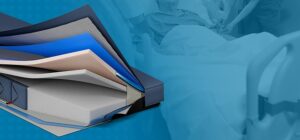The National Pressure Injury Advisory Panel (NPIAP) recently released a position statement on the effects of COVID-19 on the skin, which appears to create a perfect storm for unavoidable pressure injuries (PI) in the critically ill patient.1
This unique challenge presented itself as an unprecedented number of critically ill patients arrived in emergency departments all over the country. While scrambling to find beds and resources for the massive influx of patients, providers and wound care nurses discovered another phenomenon. While ICU patients are always at risk for PI, COVID-19 patients appeared to be different—some nurses refer to the condition as “COVID skin.2 In short, the challenge of PIs in COVID patients is even more elevated than typical ICU patients.
Elevated Risk for PI
There are multiple reasons critically ill patients are at risk for PI, including the presence of multiple comorbidities and risk factors such as immobility, incontinence, and excess moisture.
Among COVID-positive patients, literature now describes “a systemic coagulopathy including hypercoagulation and microvascular occlusion which has led to ischemic stroke, myocardial infarction, venous thromboembolism, acute limb ischemia, and pulmonary embolism.”1 This coagulopathy also effects the skin. A purpuric area (red or purple spots that do not blanche) can develop on the skin unrelated to pressure, shear strain, or use of a medical device. These areas can quickly become necrotic.
Some PIs Still Avoidable
The NPIAP position statement acknowledges that, even in a time of pandemic, some PIs should be considered avoidable, depending on intrinsic and extrinsic factors. Intrinsic factors may include nutrition status, poorly understood coagulopathy, and perfusion of the tissues and organs. Extrinsic factors include causes difficult to control during the pandemic: census surge, nurse staffing levels, and availability of pressure redistribution mattresses. In some cases, Med-Surg floors were turned into ICUs or COVID-19 units. While patients had a place to land, it may have been a stretcher or temporary cot.
According to the NPIAP, “the standard of care for critically ill patients includes support surfaces designed to redistribute pressure, reduce shear forces, and manage humidity on the skin and soft tissues. Support surfaces that offer pressure redistribution and humidity management, such as alternating pressure and low air loss, aide in keeping the skin intact during times when the patient cannot be safely turned or repositioned.”1
The most critical COVID-19 patients may be too unstable to be physically turned. The key is documenting standard interventions that have been implemented (even if unsuccessful) in case a PI develops. Every effort must be made to secure an adequate support surface—including pressure redistribution or low air loss. If not, the lack of resources also needs to be documented in times of a national pandemic.

